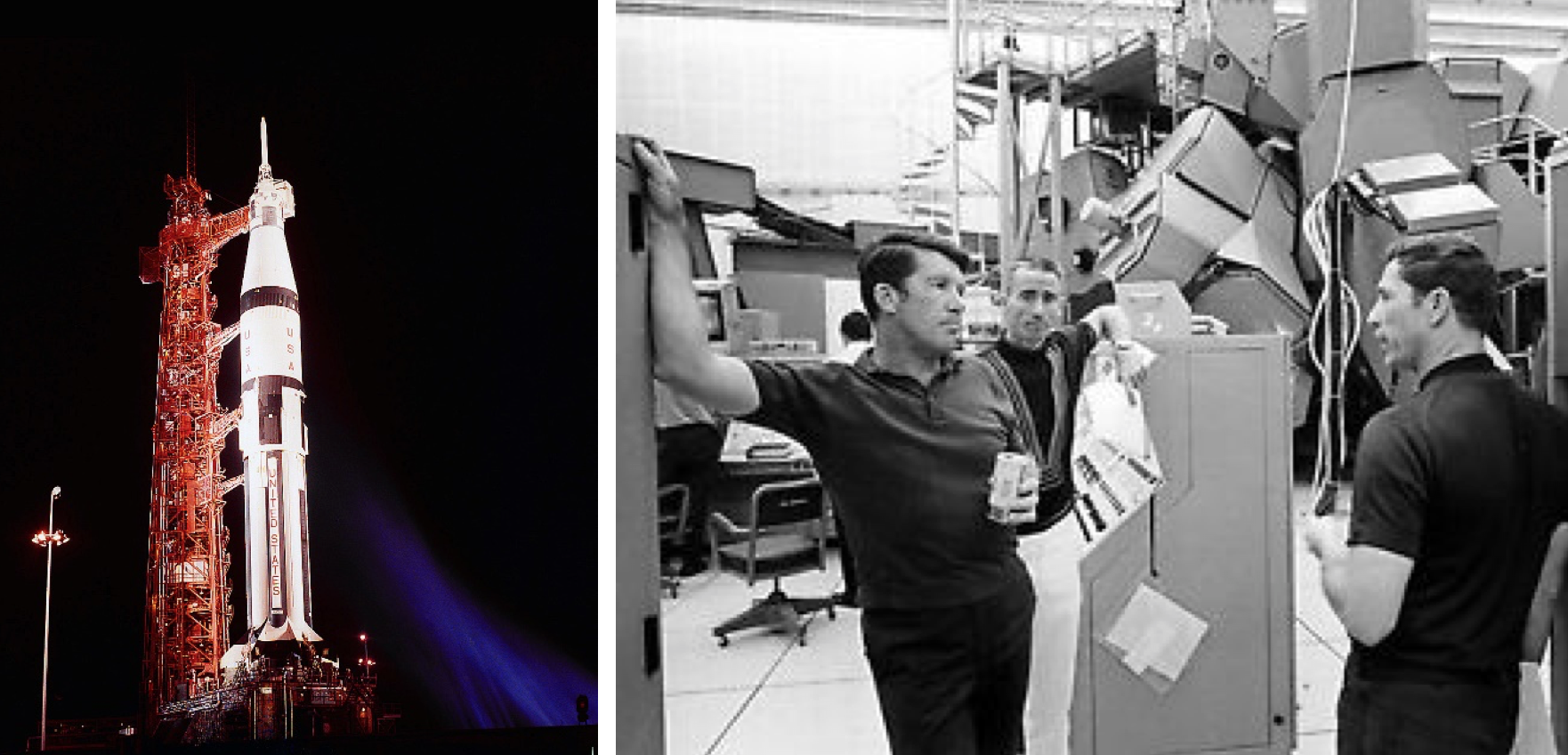August 1968 was a tumultuous month in a turbulent year. In the U.S. presidential campaign, the Republican Party held its convention in Miami Beach, Florida, August 5-8, nominating Richard M. Nixon for President, and three weeks later in Chicago, in a convention marked by violent street protests, the Democratic Party nominated Vice President Hubert H. Humphrey as their candidate for President. The nation was still reeling from the assassinations of civil rights leader Reverend Martin Luther King, Jr., and Senator Robert F. Kennedy earlier in the year. In central Europe, Soviet and Warsaw Pact forces invaded Czechoslovakia, ending the Prague Spring and that country’s hopes for democracy. On the other side of the world, the conflict in Vietnam raged on, spurring widespread demonstrations across America.
For NASA, the month was a very busy one, and most people working on the Apollo program paid scant attention to national and world events as they were laser-focused on achieving former President John F. Kennedy’s goal of landing a man on the Moon before the end of the decade. Preparations were well underway for the first crewed Apollo mission less than two months away. In May, the Apollo 7 spacecraft arrived at Kennedy Space Center (KSC) where engineers conducted tests in the Manned Spacecraft Operations Building (MSOB), then transported it out to Launch Pad 34 and mechanically mated it with its Saturn IB rocket in early August. In further work at the pad, technicians completed electrical connections between the spacecraft and its rocket. Engineers conducted integrated systems tests of the Command and Service Modules, installed and checked out the launch vehicle flight programmer, and completed integrated interface tests with the Mission Control Center at the Manned Spacecraft Center, now the Johnson Space Center in Houston. The Apollo 7 prime crew, Commander Walter M. Schirra, Command Module (CM) Pilot Donn F. Eisele and Lunar Module Pilot R. Walter Cunningham, spent time in the CM simulator at KSC to fine tune their operational skills and practiced suited ingress and egress from a mockup CM.
Alongside preparations for the first crewed Apollo mission, work was underway for the first Saturn V to carry astronauts, Apollo 8. To meet President Kennedy’s deadline, NASA decided to fly Apollo 8 in December 1968 with only the CSM while still evaluating mission scenarios, one of which included a circumlunar trajectory. In KSC’s cavernous Vehicle Assembly Building (VAB), workers had already stacked the three stages of the Saturn V launch vehicle in preparation for Apollo 8. In August, workers conducted electrical system tests of the rocket and temporarily mounted a boilerplate spacecraft atop the rocket to conduct compatibility tests with the launch tower’s swing arm. The Apollo 8 Command and Service Modules arrived at KSC in mid-August, and engineers in the MSOB began the checkout of the spacecraft, including conducting leak and functional tests of the CM’s Reaction Control System. Workers then mated the two modules in the MSOB’s altitude chamber in preparation for vacuum tests in September. The pace of the Apollo program was accelerating to meet the goal of landing a man on the Moon before the end of the decade.


























